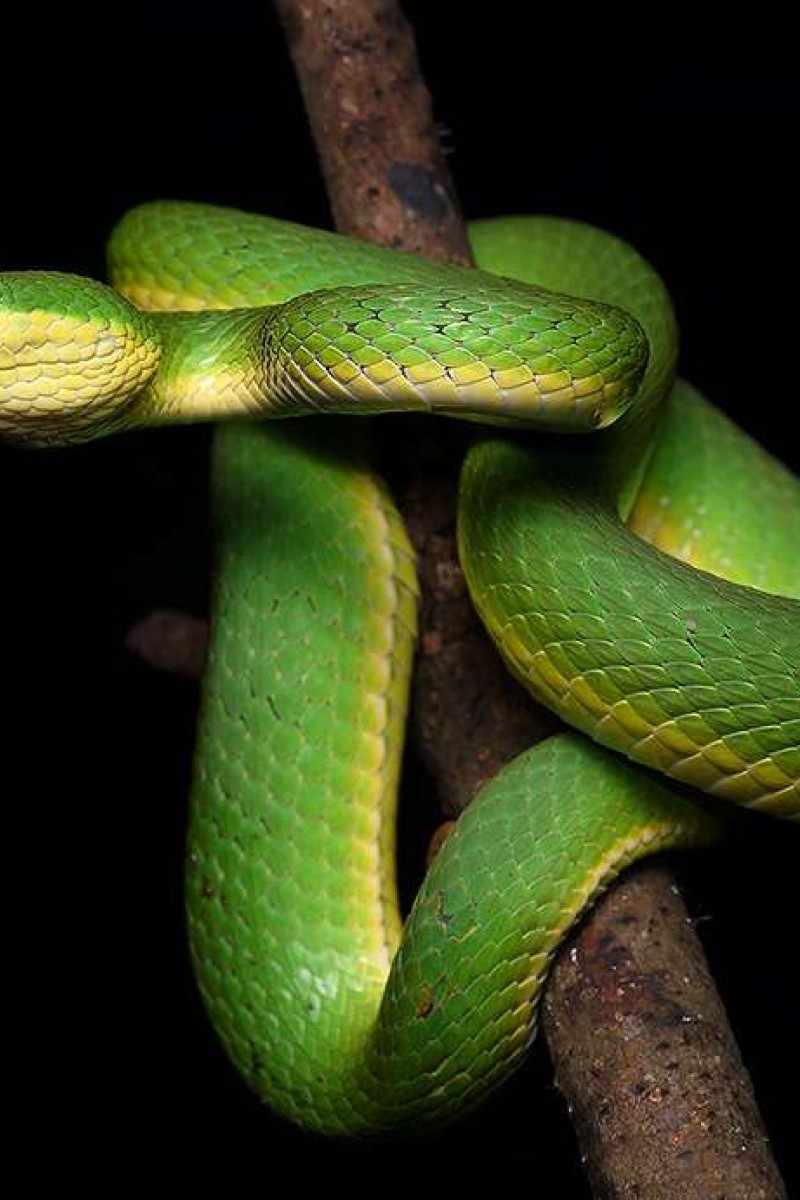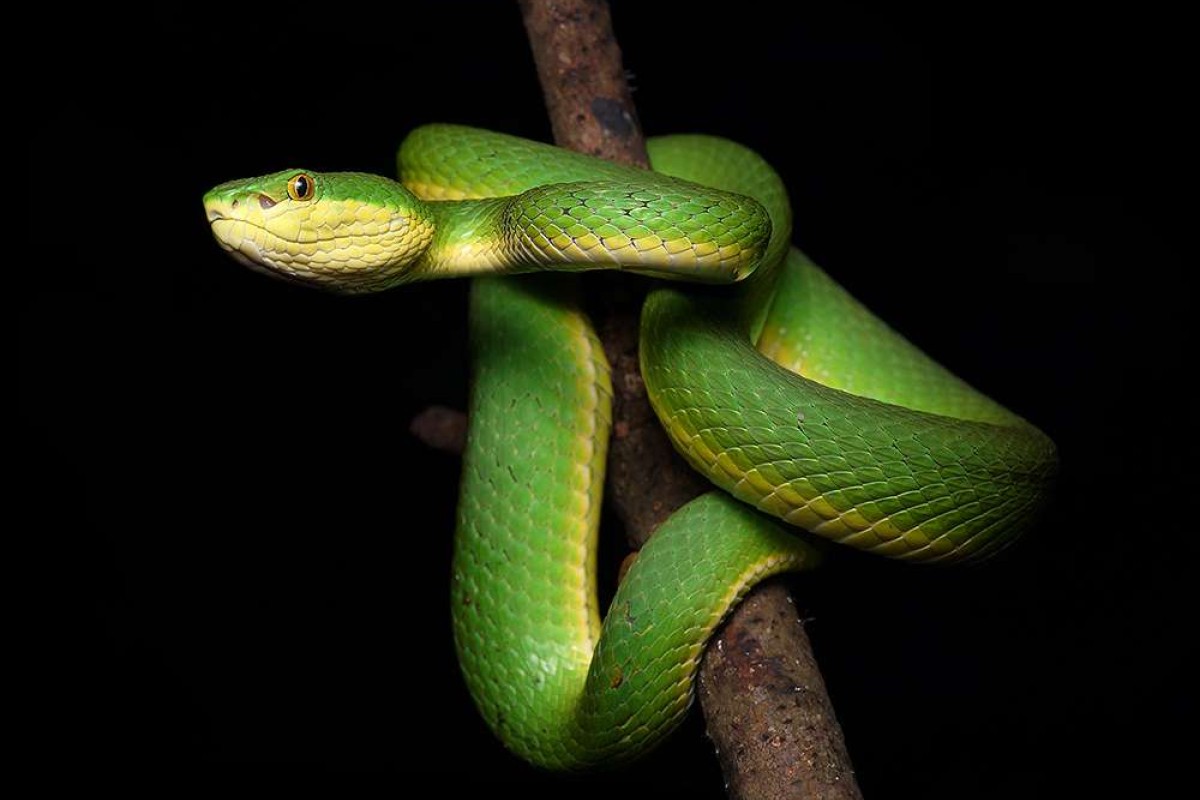
Sneaky snakes and friendly frogs, photographer Sam Yue brings us the best pics of Hong Kong’s native species
The HKU PhD student took second place in the nature category of this year’s Prix de la Photographie
 Serpent won the second prize in the nature category in this year’s Prix de la Photographie.
Serpent won the second prize in the nature category in this year’s Prix de la Photographie.What kind of photograph would best represent Hong Kong? It could be one of the iconic skyline, the housing estates, or the narrow streets and alleys in Kowloon. But to Sam Yue, a PhD student in Ecology and Biodiversity at the University of Hong Kong, it would be one of the city’s unique species.
“Even though Hong Kong is just a dot on the map, we have our own species, such as the short legged toad, Romer’s tree frog, and snakes like bamboo pit viper,” says Yue.
His stunning snake portraits won second prize in the nature category of this year’s Prix de la Photographie, a prestigious international photo competition. One of his winning photos, a picture of a bamboo pit viper, was snapped in Tai Tam Country Park.
“When you [shoot at night and] shine light on a snake, it gives it an artistic and majestic look – that’s the point I wanted to bring out,” Yue told Young Post.
Those majestic snakes may have won him international recognition, but frogs are his favourite. “They’re very cute, they have big eyes and they smile a lot. They look nice and are easy to photograph – if you don’t scare them, they don’t jump,” sys Yue.
He got his first DSLR camera four years ago, when he was working on a research project in Malaysia’s Borneo.
“I lived in a jungle for one year – a primary tropical jungle,” Yue says. “It’s never been disturbed by humans. It’s like a zoo without cages, with so many animals. After that experience, I have no interest in going to zoos anymore.”
Living in the jungle got him started on wildlife photography. “At first I couldn’t see a lot, but slowly I’ve developed my eyes to be more sensitive to wildlife,” he says. ”It takes time and experience.”
And luck. “It’s like shopping when I go out – you don’t know if you’ll find any sales. When I go out, I don’t know what I’ll find. That’s the fun part of it, a surprise.”
While in the jungle, he’s come within 10 metres of a clouded leopard, had a snake pee on him, an orangutan throw a stick at him from a tree, and “I was charged by elephants when I was driving, I guess they didn’t like the car,” Yue recalls.
He’s had his risks, but he never thinks about “what-ifs”. He simply memorises all the snake species. “If they are venomous, I stay far away,” says the freelance photographer.
The jungle may have everything a wildlife photographer wishes for, but Yue says Hong Kong is also a good place to photograph animals.
“We are fortunate we still have a lot of country parks. We should cherish and protect that,” says Yue, whose favourites are Lung Fu Shan Country Park and Tai Po Kau Nature Reserve.
Growing up in Canada, the little Yue loved watching Crocodile Hunter, a TV show that featured Australian wildlife expert and conservationist Steve Irwin. “His enthusiasm and passion for animals really got to me,” he recalls.
When Yue first came to Hong Kong to start his PhD programme, he was “so happy”: “There’s only three species of snakes in Vancouver while there’s at least 20 in Hong Kong.”
Knowing your animals is the key, he says, “You need to be familiar with what you’re photographing.” And Yue sure knows his stuff: he told us how Romer’s tree frog was first discovered at the Peak, and later another colony was found in Lantau. Scientists bred the frogs and moved them to different areas of Hong Kong before the airport was built.
“My main goal in photography is to promote the beauty of the animals we have, and get people to appreciate wildlife,” he says.
At night, he likes to go for long hikes in any of the city’s country parks. “It’s very peaceful; you can hear the night sound and all your worries just disappear. It’s like a temporary escape for me,” he says.
Shooting at night also provides a natural advantage for making the captures look like studio shots: “if you only illuminate your subject, [it keeps] the background in black and it’s like shooting in a studio,” Yue explains.
The challenge is that he has to limit his shots and really wait for a perfect moment before he presses the shutter, otherwise he risks blinding the animals with the flash.
It’s all about capturing the right moment. “Ninety per cent is hiking and looking for animals,” says Yue. “I have walked by tens of thousands of animals that I didn’t photograph, [because] the composition, the background, or the animal’s posture wasn’t right.”
On his nighttime treks, he carries his camera, a flash light and an umbrella. “The umbrella is so useful,” says Yue, adding that in addition to making a great flash diffuser, it can also use be used for self-defense, as a walking stick, and as an actual umbrella if it rains.
Now in the second year of his PhD, Yue is heading to Thailand and Malaysia to study elephants, a subject chosen by his professor. It’s sure to make for some beautiful photos, but Yue doesn’t take the credit for that.
“I don’t have a lot of creativity,” he says, “That’s why I go into [wildlife] photography: the animals are already pretty, I just need to capture the moment.”
